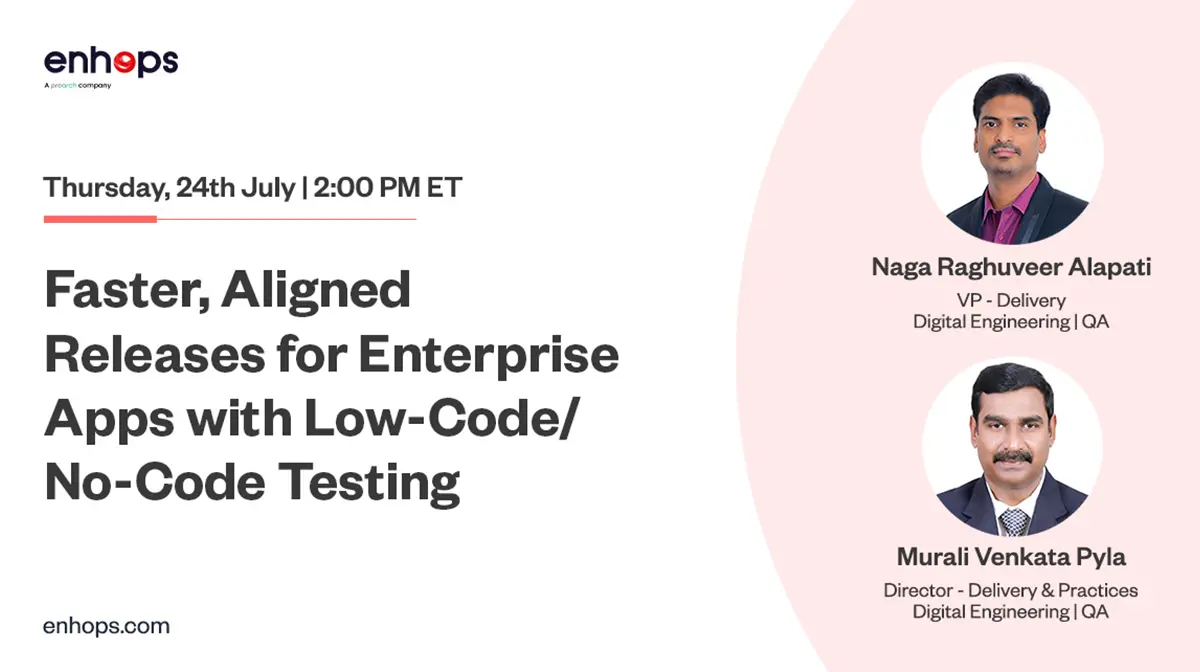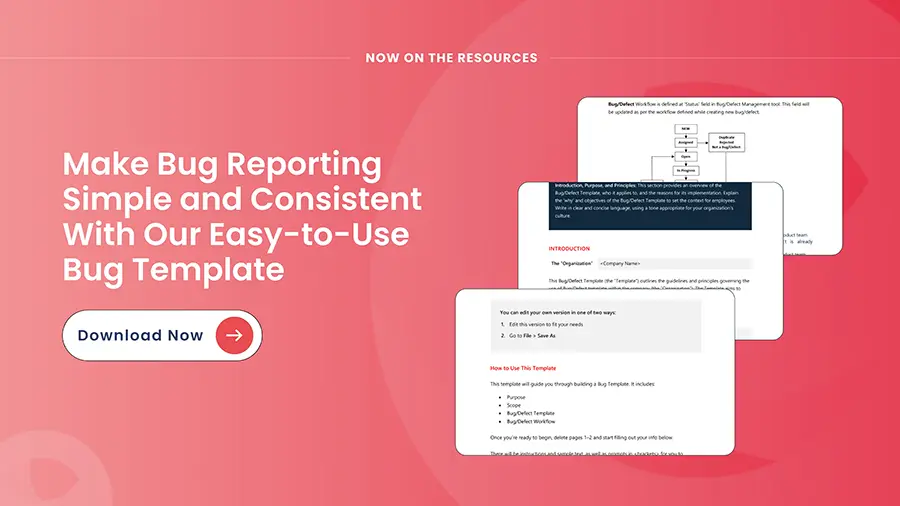Over the years, digital technologies have changed the business landscape drastically. These technologies have yielded beneficial results when implemented and adopted in right way. Today, as businesses gear up to accentuate their technological adoption and implementation, accelerating quality engineering initiatives take a front seat too.
“The quality operations and quality engineers play a more pivotal role than ever in enabling organizations to achieve higher levels of flexibility and agility, while assuring positive business outcomes and greater customer satisfaction.”
– The World Quality Report 2022-23
This article presents four test automation strategies that business leaders should adopt in 2023 to enhance their current quality engineering/software testing or quality assurance programs –
- True integration of AI-ML capabilities into testing lifecycle – With generative AI and other technologies becoming part of software engineering teams, it is time to look beyond AI-ML proof of concepts and implementing them into actual development and testing lifecycle. This includes leveraging these technologies to enhance and optimize every aspect of the testing process and use AI-ML capabilities into test planning, design, test execution and reporting.In practice, this involves using AI and ML algorithms or frameworks and tools that can generate test cases based on historical test data or real-time behavior of applications under testing or systems under testing.Some areas where Machine Learning can create profound impact on testing are:
- Machine Learning can be used to create and execute test cases by using customized algorithms to identify and extract test data from existing data sets and generating relevant test cases based on that data.
- Machine Learning models can also be used to generate and maintain test data that is similar to data in production.
- ML Models can be used in identifying test cases that are most likely to fail and analyse historical test data and patterns associated with failures. This can help in building predictive analysis ML models to ensure less number of tests fail before the code goes into production.
- ML can be used to prioritize test cases. This can be done by using ML algorithms to estimate the risk of failure for each test case, and then to prioritize the test cases based on that risk.
- ML can be used to generate reports on test results. This can be done by using ML algorithms to analyze test results, and to identify trends and patterns in those results.
- Adopting DevTestOps – As engineering teams and their methodologies keep maturing from waterfall and traditional development models, the software releases have gotten speedier. But without testing been integrated into CI-CD pipelines, these pipelines become useless and infested with bugs with serious code issues. With this, CI-CD starts creating more drawbacks than benefits.Adopting DevTestOps helps in integrating testing in its truest sense. DevTestOps is a software development methodology that combines DevOps and continuous testing. It is a way of working that brings together development, testing, and operations teams to ensure that software is tested throughout the development process, from conception to deployment.Some examples of how DevTestOps can be integrated with CI-CD pipelines are –
- A development team using a continuous integration (CI) pipeline baked with different tests like unit tests, integration tests, and smoke tests to automatically build, test, and deploy their code. This ensures that every code is tested before being deployed into production.
- Continuous Delivery (CD) pipeline must be accessible to testing teams for them to test their software in different environments such as development, staging, and production. This makes sure that codes run as expected throughout all environments.
- Another way of putting DevTestOps into practice is using Infrastructure as code. With Infra as code, operations teams can automate the deployment process using few lines of code. This ensures that software can be deployed quickly and reliably, and it also makes it easier to roll back changes if necessary.
- Establishing Testing Center of Excellence – Test automation strategies cannot be stagnant; they must continuously adapt with time and teams must be prepared to adopt new ways of testing and ensuring high-quality codes are pushed into production. But most of the times, teams get so busy with the day-to-day operations that continuous learning and innovation takes a back seat.Establishing testing center of excellence helps in standardizing test automation practices across the organization, look for new ways of testing and development innovation, create learning and adoption paths for learning new tools and technologies, executing PoCs with new tools and frameworks, invest time and efforts in culture change and adopting new tools, establish central repository for best practices and methods that can be scaled across the organization.Another area where testing center of excellence can make difference is improving developer productivity. In most of the organizations, developers are only spending an estimated 20% of their time writing functional code. Most of their productive time goes in doing administrative tasks like provisioning infrastructure, running, and maintaining security scans and coordinating with operations for change and release management.
- Investing in Performance Engineering – Once there was a time when systems were designed and built without considering performance parameters and problems and later, they were addressed offhandedly. But in current times, performance engineering has evolved as a strategic arm that focuses on ensuring that software systems and applications exceed performance requirements.As the world gets more digital, users expect every interaction with digital applications to be flawless and as smooth as possible. This includes everything speed, data security, easy of interaction, availability, visual appeal and more. This means with regular manual and automated testing; organizations must invest in performance engineering tools and technologies to ensure exceptional user experience.The only way of achieving this exceptional user experience is investing in performance engineering practice. There are few ways of upping the game in terms of performance engineering in 2023 –
- Identifying performance requirements in the beginning: Making sure that performance requirements are thought through and well-documented in beginning helps in designing applications in an ideal way. These requirements must translate in terms of measurable performance parameters such as response time, throughput, availability, load time, and more.
- Characterizing the workload: Workload characterization is the process of understanding the types of requests that will be made to a system, frequency, and data size. This information helps in identifying performance bottlenecks and predict how system will performan under various workloads and circumstances. Usually load testing and stress testing tools help engineering teams in characterizing workloads.
- Design for Performance: Once the performance requirements and workload characterization are done, the next step is to design the system for performance. This includes choosing the right hardware and software, designing the system architecture, and implementing performance-enhancing methodologies like code optimization, hardware, and software acclimatization.
- Performance Testing and Monitoring: Once the system is designed, it is important to bake all performance tests in the continuous integration pipelines. Using right cloud-based performance testing tools are a good option for teams to develop and integrate their performance tests into CI pipelines.
Additionally, it is very important to monitor application performance and metrics continuously. This helps in performance tuning and optimization continuously to address any performance issues quickly.
Winning with these automation strategies
In conclusion, the world of test automation is continuously evolving and it’s going to be dominated by rise of new technologies like AI, ML, Generative AI, Intelligent Automation and more. It is important for technology leaders to understand and make sure they are preparing themselves, their teams, and organizations to adopt and win with these strategies.
To win with these automation strategies, it is important to work alongside strategic software testing partner who come with experience of building and executing test automation strategies for organizations across the globe. At Enhops, we pride ourselves in scaling test automation efforts for more than 300+ clients across the globe including all kinds of web, mobile, accessibility, penetration, security, and other test automation efforts. We can help you in turning around your test automation strategies in 2023 and beyond to make sure that you deliver high-quality digital applications.




